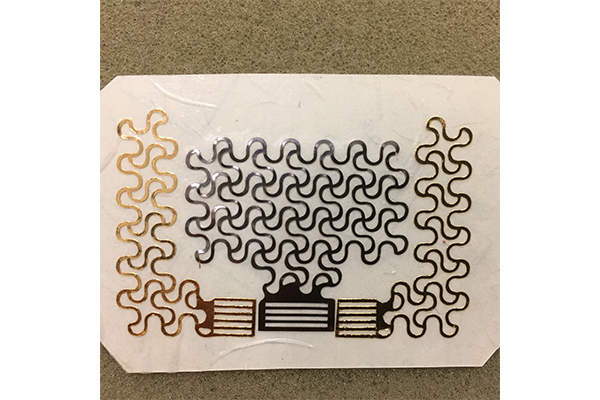Wearable medical devices could be the future in keeping hearts healthy.
UT researchers said they have developed the thinnest and most flexible electronic tattoo for the continuous monitoring of heart signals. The tattoo comes in the form of a removable patch that contains a variety of circuits to measure heart signals.
“There are several papers that (created similar devices) and some of them were stretchable, but they were not thin enough,” said Taewoo Ha, UT alumnus and lead author of the study about the device. “What we did is we made a very ultrathin sensor that can measure (the heart signals).”
The device was initially made for measuring blood pressure, Ha said. However, due to the complex nature of blood pressure, the team was only able to provide a correlation between the signals they measured and blood pressure.
Hongwoo Jang, a materials science and engineering graduate student who worked on the study, said the device monitors two different heart signals, ECG and SCG, which are related to blood pressure, to try and get the measure. ECG, or electrocardiography, measures the electrical activity of the heart while SCG, or seismocardiography, measures the vibrations of the heartbeats.
Ha said the team would need to do more research to find ways to measure more factors that would help obtain an actual blood pressure measurement, such as the properties of the blood vessels in the body or the stickiness of blood.
Heeyong Huh, a mechanical engineering senior who worked on the study, said recording blood pressure has traditionally been a hassle. Now, people can easily monitor their blood pressure at home.
“When you go to a clinic to check the state of your heart, you need to check the blood pressure and probably need to use a conventional rigid machine,” Huh said. “That only gives us a snapshot of your blood pressure.”
Huh said these snapshots are not as helpful to doctors monitoring the heart because a variety of factors can continuously change blood pressure in the body.
“If you calculate the blood pressure from the heart signals (measured by the device), we can do continuous monitoring of (patient) blood pressure, which should be much more helpful for doctors who want to monitor heart condition in real time,” Huh said.
The device could also be used as a general health device for people who want to monitor heart health without the use of bulky medical devices, Ha said.
Additionally, Ha said the flexibility of the device allows users to wear it for up to three days at a time with little discomfort. People may need to remove their tattoos when sweat degrades the adhesive used to attach the device to the skin.
In the future, the researchers hope to power the device from a smartphone by attaching layers to the device that receive signals from the phone. With the layers, Jang said users can hold their smartphone up to the tattoo to charge the device and capture their heart readings.
“This patch opens the kind of potential to give people more access to their medical data,” Huh said. “I think that’s an advantage.”















